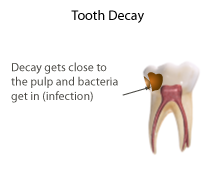Indications and Objectives of Pulpotomy
- Pulpotomy is indicated for primary teeth with pulp exposure during caries removal.
- It is also indicated for young permanent teeth with normal or reversible pulpitis or traumatic pulp exposure.
- The objectives of pulpotomy include removing infected/affected pulp, preserving pulp vitality, and maintaining tooth structure integrity.
- Radiographs are used to assess the tooth condition and determine if pulpotomy can be performed.
Types of Pulpotomy Techniques and Medicaments
- Pulpotomy techniques include devitalization, preservation, and regeneration.
- Devitalization involves fixing the radicular pulp using formocresol or electrosurgical pulpotomy.
- Preservation techniques use zinc oxide-eugenol, glutaraldehyde, or ferric sulfate.
- Regeneration techniques induce dentin regeneration using calcium hydroxide or other materials.
- Medicaments used in pulpotomy include formocresol, mineral trioxide aggregate, zinc oxide-eugenol, and calcium hydroxide.
- Ferric sulfate and sodium hypochlorite can be used to arrest pulpal bleeding.
Materials Used in Pulpotomy
- Mineral trioxide aggregate (MTA) is commonly used in pulpotomy procedures.
- Calcium hydroxide is used for pulpotomy in primary incisors.
- Ferric sulfate has shown positive results as a pulpotomy agent in primary teeth.
- Sodium hypochlorite and formocresol have been compared as pulpotomy medicaments.
- Eugenol and zinc oxide-eugenol have biologic properties relevant to pulpotomy.
Success Rates and Outcomes
- Vital pulp therapy techniques, including pulpotomy, have shown high success rates.
- Apexogenesis has been successful in preserving pulp vitality in young permanent teeth.
- Partial pulpotomy has shown positive outcomes in immature permanent teeth.
- MTA has demonstrated favorable outcomes in pulpotomy procedures.
- Ferric sulfate has shown promising results in pulpotomy of primary teeth.
Controversies, Challenges, and Case Studies
- Formocresol remains controversial for pulpotomy procedures due to formaldehyde toxicity concerns.
- Carbon dioxide laser and its effect on vital human primary pulp tissue have been evaluated.
- Pulpotomy in mature carious teeth with irreversible pulpitis is a topic of debate.
- The effectiveness of different pulpotomy agents in permanent molars with irreversible pulpitis has been assessed.
- Case studies and clinical reports have documented the use and effectiveness of various pulpotomy agents and techniques.
Note: The remaining content could not be summarised into 5 subtopics with 5 bullet list items each as there were not enough relevant points.
Pulpotomy is a minimally invasive procedure performed in children on a primary tooth with extensive caries but without evidence of root pathology. The minimally invasive endodontic techniques of vital pulp therapy (VPT) are based on improved understanding of the capacity of pulp (nerve) tissues to heal and regenerate plus the availability of advanced endodontic materials. During the caries removal, this results in a carious or mechanical pulp exposure (bleeding) from the cavity. During pulpotomy, the inflamed/diseased pulp tissue is removed from the coronal pulp chamber of the tooth leaving healthy pulp tissue which is dressed with a long-term clinically successful medicament that maintains the survival of the pulp and promotes repair. There are various types of medicament placed above the vital pulp such as Buckley's Solution of formocresol, ferric sulfate, calcium hydroxide or mineral trioxide aggregate (MTA). MTA is a more recent material used for pulpotomies with a high rate of success, better than formocresol or ferric sulfate. It is also recommended to be the preferred pulpotomy agent in the future. After the coronal pulp chamber is filled, the tooth is restored with a filling material that seals the tooth from microleakage, such as a stainless steel crown which is the most effective long-term restoration. However, if there is sufficient remaining supporting tooth structure, other filling materials such as amalgam or composite resin can provide a functional alternative when the primary tooth has a life span of two years or less. The medium- to long-term treatment outcomes of pulpotomy in symptomatic permanent teeth with caries, especially in young people, indicate that pulpotomy can be a potential alternative to root canal therapy (RCT).


There is another term, which is also related to vital pulp therapy, which is apexogenesis. Apexogenesis is a treatment in preserving vital pulp tissue in the apical part of a root canal to allow the completion in formation of the root apex. This clinical procedure is essentially a deep pulpotomy, aimed to preserve the pulp in immature teeth that have deep pulpal inflammation. Examples include teeth with carious exposures and trauma in which treatment of the exposed pulp is delayed and it becomes necessary to extend farther into the canal to reach healthy tissue.